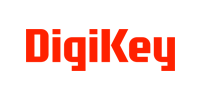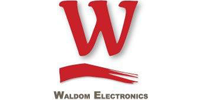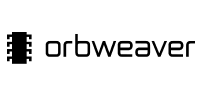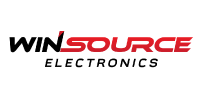Catalog Distributors Use Accessibility, Information To Get Ahead
Catalog distributors—those companies known for offering quick delivery on just about any electronic component a customer could ask for, all at the click of a mouse or a quick phone or fax order—have grown considerably in recent years, harnessing the power of the Internet to expand their reach around the world. In the process, many have encountered a host of new challenges, such as keeping up with technology, dealing with new cultures, and expanding customer support options.
Many catalog distributors say their greatest challenge will be identifying key industry trends and responding to them in a way that fully leverages today’s rapidly changing technology. Consider how many distributors are embracing social media to provide customers with new product information. Is there a better way to keep customers up to date on your latest offerings than by delivering that information straight to their desktop, smart phone, or tablet?
Catalog distributors say their newfound size and scope has not changed their ultimate mission to provide electronic design engineers quick delivery on the widest possible range of products. Rather, it simply has expanded that mission to a much wider audience of design engineering customers.
“Large catalog distributors offer customers a breadth of product that [they] can’t get elsewhere,” says Mark Larson, president and chief operating officer of Digi-Key, a catalog distributor that offers more than 2 million electronic components on its Web site.
“Customers want to have instant access to all of the latest and hottest components, and [they] expect that their orders will consistently be shipped the same day,” Larson says. “That is what we do. [We] ship millions of orders each year to hundreds of thousands of customers around the world—and 99.8% of the orders are shipped the same day they are received.”
Scott McLendon, vice president of product management and marketing for Allied Electronics, has similar sentiments, emphasizing accessibility as a key attribute of catalog houses.
“I think our biggest advantage can be summed up in one word: access,” McLendon explains, pointing to Allied’s offering in particular. “Access to technical and commercial information 24/7/365, access to an unparalleled breadth of inventory (not just the ‘A’ movers), and access to tools that help not only design engineers but purchasing professionals be more efficient.”
McLendon agrees that the Internet has played and will continue to play an important role in the growth and success of electronic components distributors in general. He says the Internet has helped Allied engage the market on a much wider scope, for one.
Through search engine and online marketing, Allied Electronics is driving more than 2 million visits per month to its Web site, and many of those are first-time visitors. The increased traffic helped the company nearly double its online sales in 2010.
From a sales perspective, McLendon says the “Internet explosion” is helping drive demand for electronic designs that are smarter and faster, with better power management and lower production costs.
“In 2012, it’s forecasted that over 2 billion people will have Internet access, and the number and types of devices that will be connected via the Web are exploding,” McLendon adds.
Catalog distributors are challenged to keep up with the growth on both fronts, and it’s causing many of them to reach out to customers in new and different ways, particularly when it comes to providing customer support. Customized Web sites, technical support, and innovative communication strategies are just a few of the ways companies are addressing these challenges.
Supporting Growth
All distributors are looking for new and better ways to support their expanding customer base. For most catalog distributors, that means doing so without the help of outside sales representatives or field application engineers.
Many distributors have approached this by developing customized Web sites for different parts of the world that allow customers to interact with them in their local language and currency. Digi-Key, for example, has 81 country-specific Web sites.
Mouser Electronics has 42 country-specific Web sites where customers can access all of the distributor’s information in their local language and purchase products and services in their local currency. Additionally, Mouser combines its online presence with physical sales branches in 14 locations around the world (with seven more coming this year).
Although Mouser does not offer design support, it does provide technical support for sourcing, bill of materials, and technical questions through the company’s numerous customer service locations strategically placed to provide local, personalized support to design engineers and buyers. Inside sales representatives provide an additional layer of service.
“We really want to be the preferred source for design engineers and small production buyers,” explains Kevin Hess, vice president of technical marketing for Mouser Electronics. “That means giving them all the information they need to source products, any time they need it—online or by calling our sales branches.”
Hess says such efforts are crucial in today’s fast-paced marketplace.
“Design engineers don’t have the same amount of time they used to have to complete a project,” he adds. “There is a much shorter time-to-market. They also don’t have the time to go out and research several different manufacturers’ Web sites to find what they need. The have to find everything they need in one location and be able to buy it there.”
Hess says many design engineers are also being asked to do much more work than they have in the past—producing more, sourcing their own products, and sometimes even working on a part of the board they are not familiar with. All of these issues cry out for information and support, he says.
“We are all about getting information out—technical data, spec sheets, product guides,” he says. “It’s also important to let design engineers know about the lifecycle status of a part, because the lack of this critical component can cost them a time-to-market advantage and additional cost due to redesign.”







